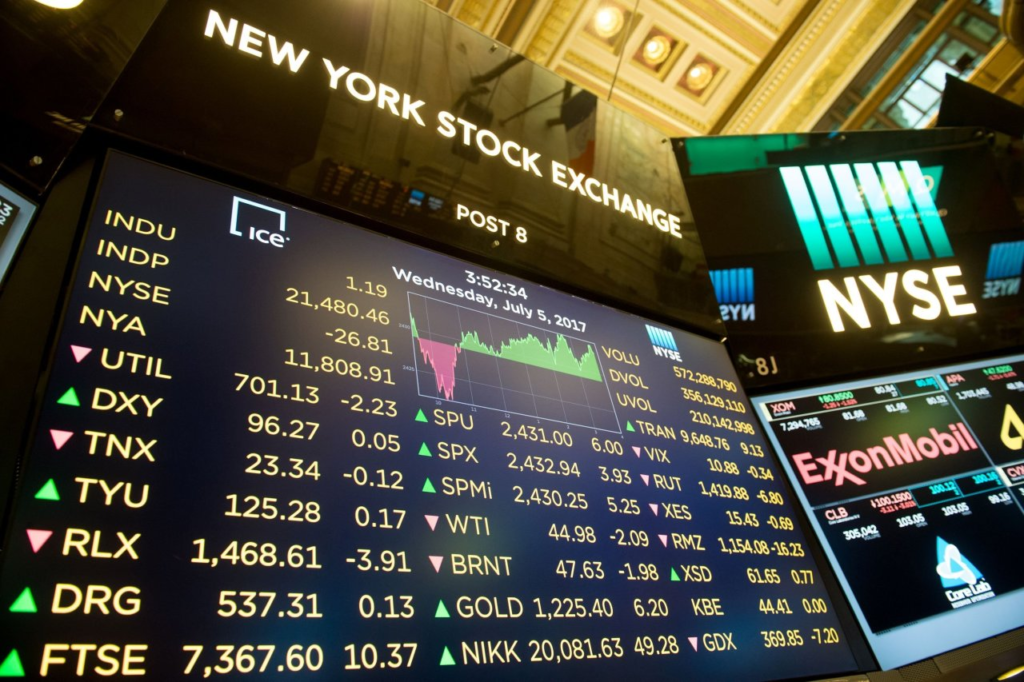Hedge funds, known for thriving in volatile markets, struggled last week as stock prices swung wildly. Instead of navigating the chaos smoothly, some of Wall Street’s largest firms fueled the sell-off, deepening losses in major stocks.
On Monday, the S&P 500 fell 2.7% while the Nasdaq dropped 4%, marking the biggest two-day hedge-fund retreat in four years, according to Goldman Sachs. It was one of the largest such moves in the past 15 years.
As hedge funds rushed to reduce their exposure, their selling pressured top holdings. Alibaba, a favorite among funds earlier in the month, plunged 5.7%, Wells Fargo fell 6%, and Nvidia lost 5.1%, erasing $139 billion in market value.
The volatility continued into Tuesday. As stocks tumbled in the morning, Goldman Sachs warned clients that stock-picking hedge funds had suffered their worst 14-day period since May 2022. “We have started to see large and broad-based risk unwinds,” the firm stated. “Our best guess is that we are currently in the middle innings of this episode.”
By the end of the day, however, the market had reversed. A price surge in hedge-fund-favored stocks made it “the best single day in three years” for these funds relative to the broader market, according to Goldman.
Read More: Google may soon change the way of answering calls
A Market on Edge
Despite brief rebounds, concerns about a potential recession grew. By Thursday’s close, the S&P 500 had fallen 10% from its February 19 record high, marking the fastest drop into correction territory in five years. It was also the 11th fastest decline in the past 50 years. A Friday rally helped lift spirits, but investors remained uncertain about the market’s direction.
The pressure on hedge funds had been building for weeks. Millennium Management, a $75 billion hedge fund, reported a 1.3% loss in February, its worst month in six years. By March 6, it was down another 1.4%. Founded by Israel Englander in 1989, Millennium has historically posted an average annualized return of 14%. Before this year, it had only about a dozen months where losses exceeded 1%.
Millennium follows a growing trend in hedge fund strategy known as the multimanager model. Other industry giants such as Ken Griffin’s Citadel and Steve Cohen’s Point72 also use this approach, employing numerous independent investment teams to generate consistent returns. These firms now wield enormous influence, managing a combined $366 billion as of mid-2024. Despite accounting for just 9% of hedge-fund assets in 2023, they represented nearly 30% of the industry’s overall market footprint, according to Goldman Sachs.

The Risk of Crowded Trades
Multimanager firms are highly focused on risk management. At Millennium, if a portfolio manager’s losses reach 5% of their allocated capital, their trading power is typically cut in half. If losses reach 7.5%, their positions are liquidated entirely and they are let go. While this system is designed to control risk, it can also intensify selling pressure when multiple teams or rival firms unwind similar trades at the same time.
Steve Cohen, the founder of Point72 and owner of the New York Mets, turned bearish earlier this year. “You’ve got a brew of sticky inflation, slowing growth, and austerity in the government,” he said at a Miami conference last month. “I’m actually pretty negative for the first time in a while.”
As uncertainty spread, hedge funds unwound their most crowded trades, adding to market instability. Many had piled into the same high-performing stocks, only to exit those positions simultaneously when conditions worsened. A Goldman Sachs exchange-traded fund tracking hedge-fund favorites including Alibaba, Amazon, Meta, Microsoft, and Nvidia dropped 14% in a month, while the S&P 500 declined 9.7%.
At the same time, stocks that hedge funds had shorted such as Western Union unexpectedly outperformed, while financial companies they had bet on, including Capital One, Citigroup, and Wells Fargo, lagged behind.
Uncertain Outlook
On Tuesday, investors dialed into a Morgan Stanley call where hedge-fund heavyweight David Tepper and other top fund managers debated the economic impact of Trump administration policies. The discussion covered tariffs, government debt, and interest rates, but there was little consensus. Many hedge-fund leaders admitted they were unsure which policies Trump would implement, leaving even the most experienced investors struggling to predict what happens next.
